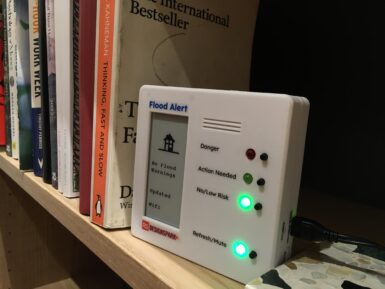
Overview
We've taken the original Circuit Playground Classic and made it even better! Not only did we pack even more sensors in, we also made it even easier to program.
Adafruit Circuit Playground Express is an all-in-one design board featuring a processor, sensors, LEDs, USB, and more, making it an ideal introduction to electronics and programming. Circuit Playground Express currently supports programming via Microsoft MakeCode, a web-based code editor for physical computing.
Using MakeCode's visual block-based editor, or its JavaScript editor, users can build programs to create custom animations, sounds, and use sensor events like "On Shake" to react to external stimulus.
The Circuit Playground Express is based on an ultralow-power SMART SAM L21 Microcontroller, using a 32-bit ARM® Cortex®-M0+ core.
The SAM L21 features sophisticated power management technologies, allowing for very low current consumption.
It can be powered from USB, "AAA" battery pack, or with a Lipoly battery. The round, sensor-packed Circuit Playground Express Board features alligator-clip pads around the edge, making it easy to connect to projects without having to solder.
Built-in USB allows quick connectivity for programming, with no special cables or adapters required.
Get Inspired
An IoT Moisture sensor that sends moisture data from an Arduino Nano 33 IoT to the Arduino IoT Cloud

As climate change continues to worsen, events such as heavy rains, hurricanes, and atmospheric rivers have only intensified, and with them, large amounts of flooding that pose serious risks to life and property. Jude Pullen and Pete Milne, therefore, have responded by creating a "physical app" that can show the potential for flood dangers in real-time with sound, lights, and an ePaper display. The Arduino Nano 33 IoT powering the Flood Alert device sources its data from the UK Environmental Agency’s API to get statistics on an area’s latest risk level along with an extended description of what to expect. Initially, the electronics were mounted to a breadboard and housed within a cardboard enclosure, but a later revision moved everything to soldered protoboard, a 3D-printed case, and even added a piezoelectric buzzer to generate audible alerts. For now, the Flood Alert’s sole source of data is the aforementioned API, but Pullen hopes to expand his potential data sources to include “hyper-local” sensors that can all be aggregated and analyzed to give a much more precise view of flooding in a smaller area. To learn more about Flood Alert and its myriad applications to local communities and beyond, check out the original long read article’ is available at DesignSpark.









